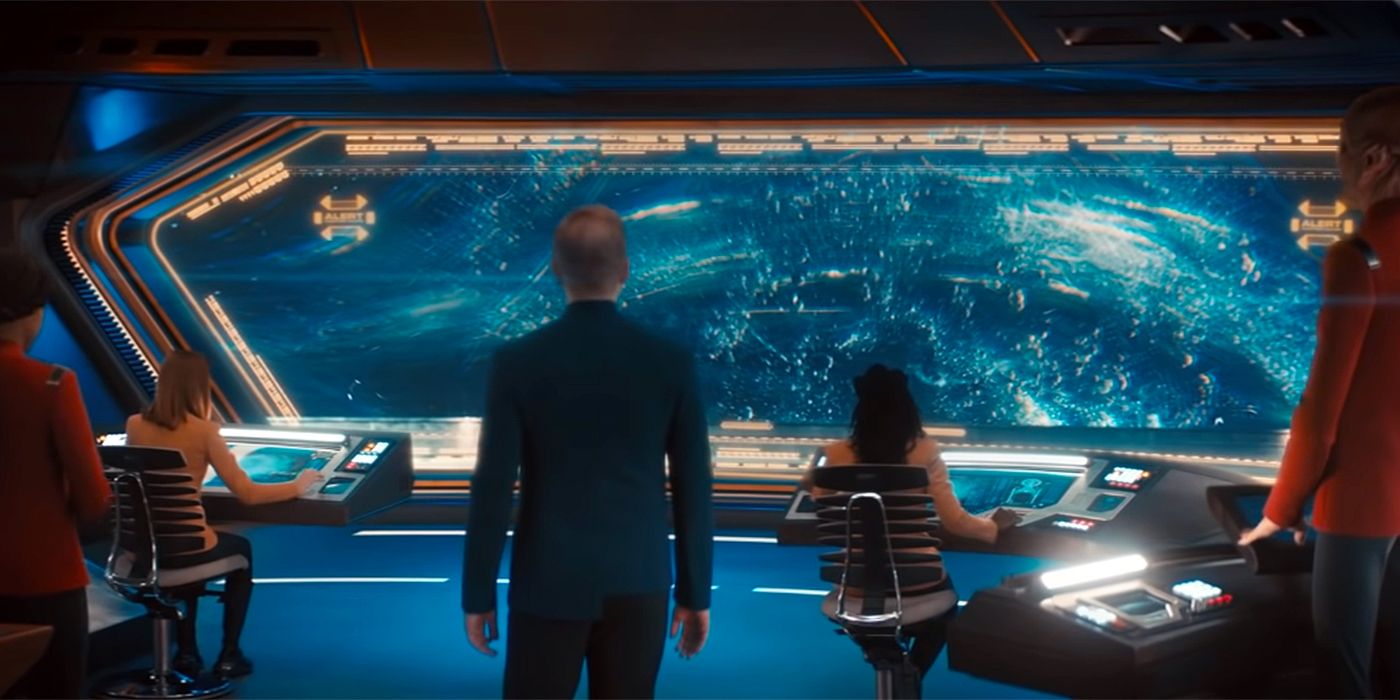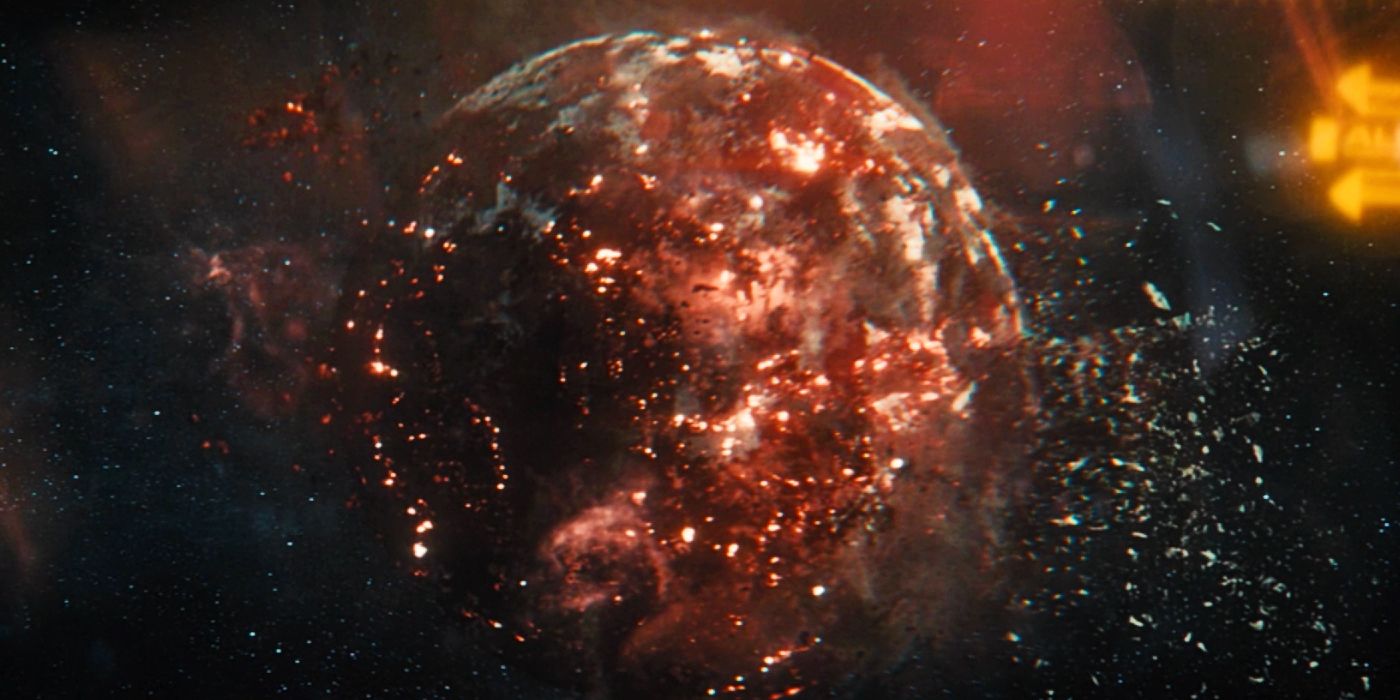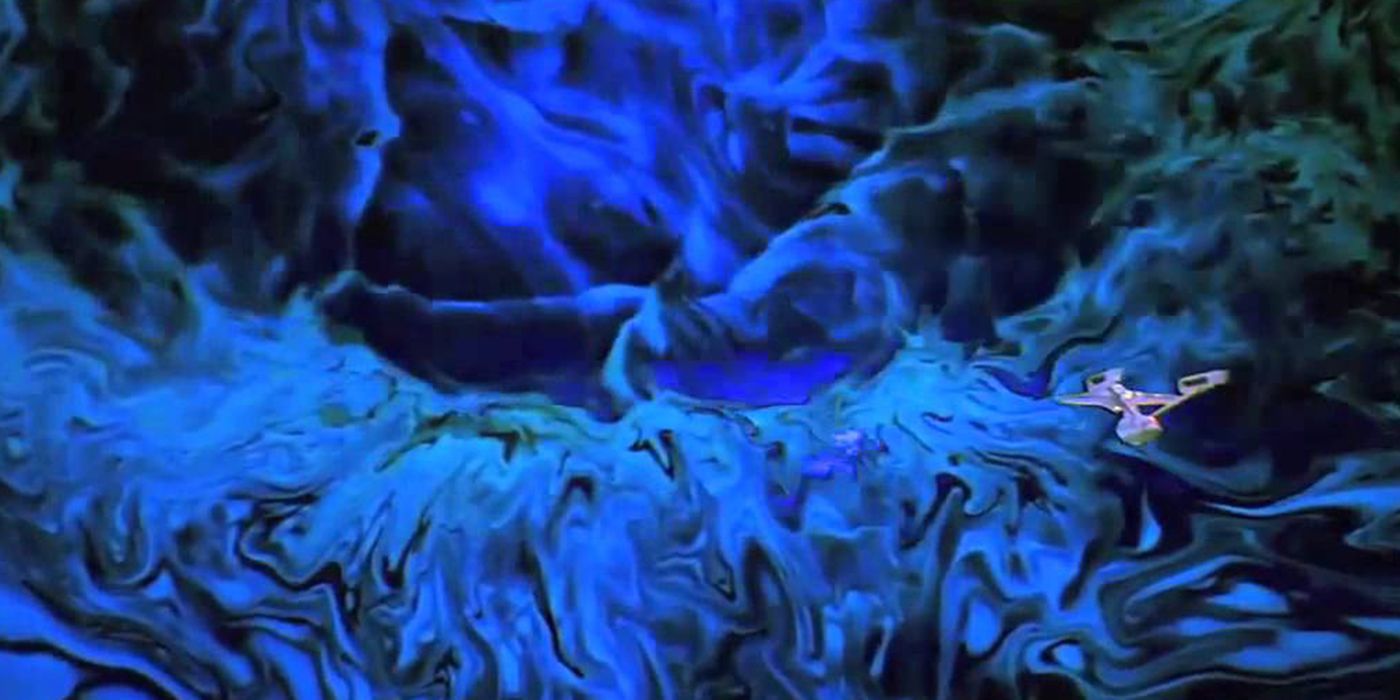
WARNING: The following contains spoilers for Star Trek: Discovery Season 4, Episode 2, "Anomaly," streaming now on Paramount+.
While Star Trek: Discovery began its fourth season with the eponymous starship triumphantly leading the charge in the United Federation of Planets and Starfleet rebuilding itself after a cataclysmic incident known as the Burn, the fresh start was immediately hampered by a shocking new anomaly. While assisting a space station that had suddenly gone careening out of control, the crew of the Discovery was horrified to learn that the planet Kwejian was devastated by an unseen force that left the entire planet's surface ravaged and virtually all of the empaths living on it killed in an instant, leaving Cleveland "Book" Booker as the apparent last empath alive in the galaxy. And as the Discovery investigates the matter further, they discover just how dire this new crisis truly is.
As Captain Michael Burnham and her crew quickly leap into action to discover the source of this unfathomable tragedy, Chief Engineer Paul Stamets and Sylvia Tilly theorize that a gravitational singularity, akin to a black hole, may be responsible based on their analysis of Kwejian's ruins. Tracking down an anomaly based on their analysis, the Discovery uses its Spore Drive to transport itself a relatively safe distance away while Stamets and Book move closer to the anomaly in Book's unique, shape-shifting vessel and scan for additional data about the singularity. And while Stamets and Book acquire a wealth of new information about the anomaly and are able to safely return to the Discovery for further analysis, Tilly's findings suggest that this crisis is far more dangerous to the resurgent Federation than they initially anticipated.

When facing the actual singularity, Stamets and Tilly quickly realized that this anomaly did not behave as black holes normally would and that its gravitational properties and trajectory did not align with their original theories about its path. With Stamets' new treasure trove of data gathered from his perilous odyssey with Book, Tilly realized that the singularity's path was truly unpredictable and, given its velocity and unique properties, it had the potential to destructively appear anywhere in the galaxy and consume all matter in its immediate vicinity, effectively making nowhere safe.
The idea of Star Trek facing a massive natural disaster as an unbeatable antagonist is certainly not new to the franchise. Star Trek: The Original Series saw the crew of the Enterprise endure cosmic anomalies semi-regularly right from its second pilot episode "Where No Man Has Gone Before," and this tradition continued in subsequent series like Star Trek: The Next Generation. For a series that began as action-oriented as Star Trek: Discovery did, having a spatial anomaly serve as a major antagonist is something of a return to form for the franchise, eschewing a conventional, tangible villain for something more ecological and esoteric.

This isn't, of course, to say that Discovery Season 4 might not reveal this anomaly is as spontaneous as it appears, but rather potentially the product of some unseen secret weapon or ambitious experiment gone horrifically wrong. But, as it currently stands, the anomaly appears to be a grave natural disaster. And with no discernible way to neutralize the anomaly or even predict where it may appear next, the Discovery must learn all it can about this epic, new threat before it potentially moves to snuff out the Federation before it truly has a chance to rebuild itself to its former glory.
To see the Discovery's current biggest threat, the first two episodes of Star Trek: Discovery Season 4 are available now on Paramount+.
0 Comments